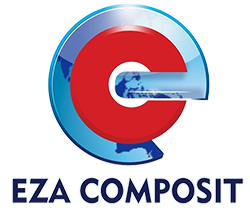Allowance for Uncollectible Accounts
Content

It may be obvious intuitively, but, by definition, a cash sale cannot become a bad debt, assuming that the cash payment did not entail counterfeit currency. Let us take an example where a company has a debit balance of account receivables on its balance sheet to an amount of $500,000. The business expects that not all customers will be able to pay 100% of the amount and estimates that $100,000 will not be converted into cash.

To do this, increase your bad debts expense by debiting your Bad Debts Expense account. Then, decrease your ADA account by crediting your Allowance for Doubtful Accounts account.
Direct Write-Off Method vs Allowance for Doubtful Accounts
The estimate of uncollectible amounts are both posted on the reports on financial performance and financial position of the company. Secondly, the seller may recognize the debt as a bad debt expense and write off the debt. Most balance sheets report them separately by showing the gross A/R balance and then subtracting the allowance for doubtful accounts balance, resulting in the “Accounts Receivable, net” line item. Note that the accounts receivable (A/R) account is NOT credited, but rather the allowance account for doubtful accounts, which indirectly reduces A/R. The allowance reserve is set in the period in which the revenue was “earned,” but the estimation occurs before the actual transactions and customers can be identified.
- For example, your ADA could show you how effectively your company is managing credit it extends to customers.
- The accounts are shown in the balance sheet in the asset section itself, just below the accounts receivables line item.
- If you have a significant amount of cash sales, determining your allowance for doubtful accounts based on percentage of accounts receivable collected will give you a higher margin of safety.
- In contrast, allowance for doubtful accounts is a method of estimation done on a prior basis as soon as the sale is made.
- For example, if ABC Company sells raw materials for around $100,000 on credit, do you think the whole amount of the company would be paid off?
- That total is reported in Bad Debt Expense and Allowance for Doubtful Accounts, if there is no carryover balance from a prior period.
And similarly, we follow the same accounting rule here by crediting the allowance for doubtful debts account. Since they are provisioned and are used as counter-asset, we will credit it.
The Allowance as a Contra-Account
The Allowance for Doubtful Accounts is a balance sheet contra asset account that reduces the reported amount of accounts receivable. The use of this allowance account will result in a more realistic picture of the amount of the accounts receivable that will be turning to cash, https://simple-accounting.org/ since some customers may not pay the full amount owed to the company. Let’s say your business brought in $60,000 worth of sales during the accounting period. Based on historical trends, you predict that 2% of your sales from the period will be bad debts ($60,000 X 0.02).

In the Balance Sheet, for companies to be able to show a conservative amount of their Accounts Receivable balances, the Allowance for Doubtful Accounts is established. Because of the recognition of the Allowance for Doubtful Accounts, the Income Statement and Balance Sheet reports will not be overstated. All legitimate business benefits belong in your business case or cost/benefit study. Find here the proven principles and process for valuing the full range of business benefits. Free AccessBusiness Case GuideClear, practical, in-depth guide to principle-based case building, forecasting, and business case proof.
Doubtful account versus bad debt
The Allowance for Doubtful Accounts is a contra-asset account that estimates the future losses incurred from uncollectible accounts receivable (A/R). Are $10 million, then by recording this entry, we’re offsetting bad debt from the credit sales already. If a company starts thinking about the bad debts way too late, it wouldn’t be possible for the company to prepare for it immediately. So an estimated figure for allowance for doubtful accounts definition what may not be received is decided in advance. In the example above, we estimated an arbitrary number for the allowance for doubtful accounts. There are two primary methods for estimating the amount of accounts receivable that are not expected to be converted into cash. Typically, accountants only use the direct write-off method to record insignificant debts, since it can lead to inaccurate income figures.
- This method violates two fundamental principles of GAAP, the matching principle and principle of conservatism since net receivables are often overstated.
- It is important to consider other issues in the treatment of bad debts.
- As of January 1, 2018, GAAP requires a change in how health-care entities record bad debt expense.
The accounts are shown in the balance sheet in the asset section itself, just below the accounts receivables line item. Doubtful accounts are generally considered contra accounts, meaning they will have either zero or credit balances. Any amount added to the allowance for a questionable account will always represent an amount for the deduction. Recording any amount here means that the business can easily see the extent of bad debt expected by the industry and how much it is creating an offset to the total accounts receivables of the company.
Allowance for Doubtful Account Journal Entries
The estimates used by the management will be based on the knowledge and experience that they have encountered in the past and current events. It is very important that every company adheres to the concept of the matching principle which states that for every revenue, there should be a corresponding expense recorded. Under the Accrual Basis of Accounting, when the Allowance for Doubtful Accounts is recorded at the same time that the sales are, it helps the Financial Reports to be recorded accurately. Free AccessFinancial Metrics ProKnow for certain you are using the right metrics in the right way. Learn the best ways to calculate, report, and explain NPV, ROI, IRR, Working Capital, Gross Margin, EPS, and 150+ more cash flow metrics and business ratios. The invoice will state payment terms such as “Net 30,” or “Net 60,” which means the customer is obligated to pay the balance due no more than 30 or 60 days after receiving the invoice.


Leave a Reply
Want to join the discussion?Feel free to contribute!